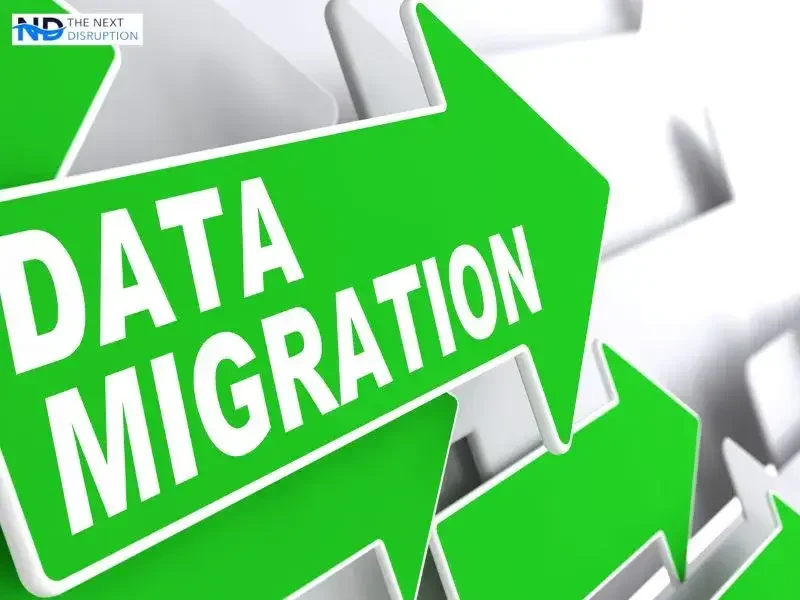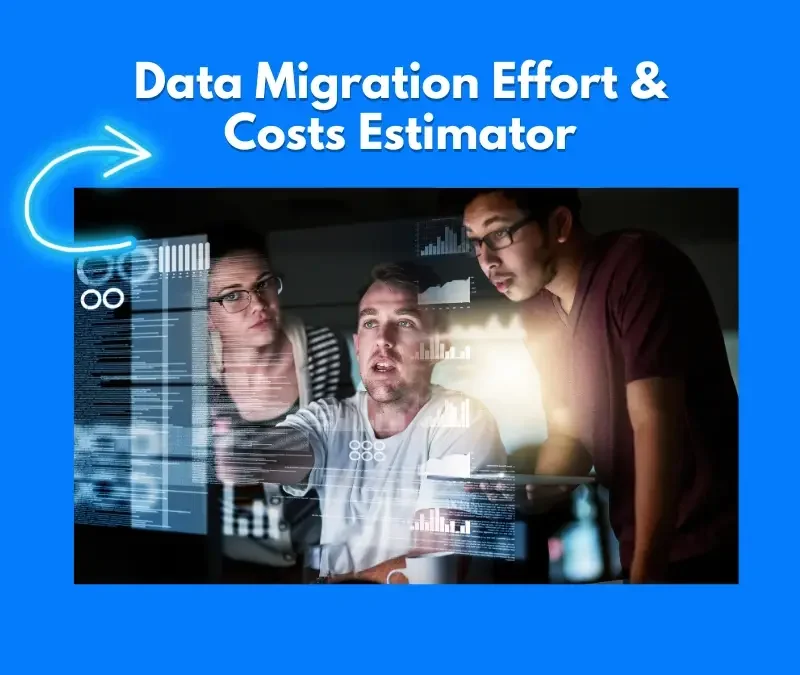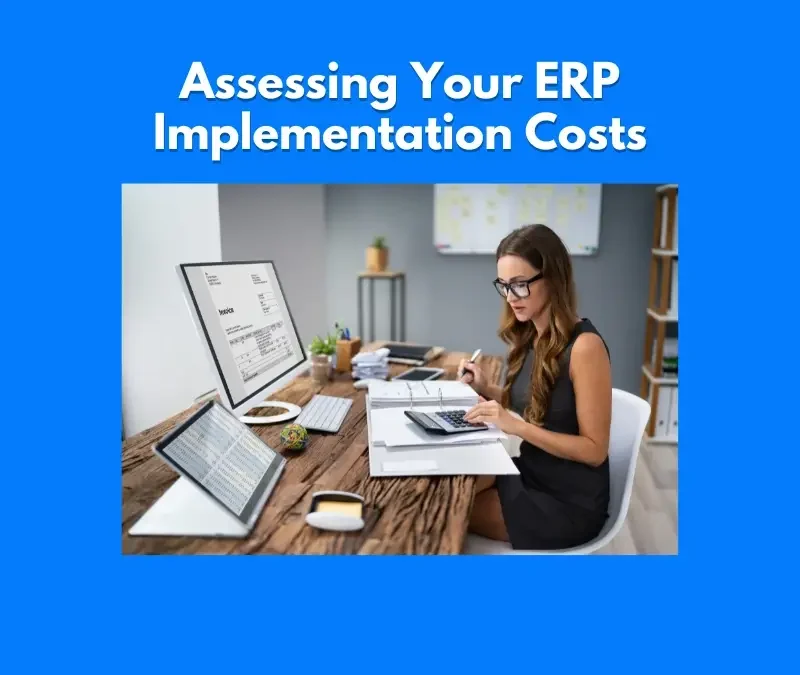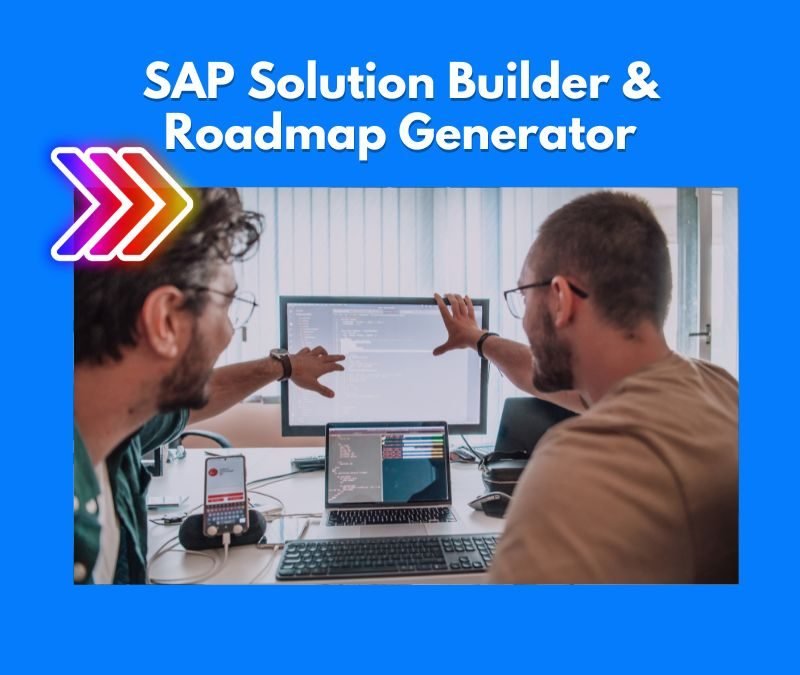Easy to Use Data Migration Effort Estimation Calculator
Moving data to SAP is harder than most people think. I’ve watched companies plan for 3 months of data work that ended up taking 6-9 months.
Our Data Migration Calculator helps you get the numbers right. Most tools only look at how many records you have. This one looks at the stuff that really matters – how messy your data is, how complicated your business is, and how much cleanup you’ll need to do.
I created this tool after a client disaster. A manufacturing company told me their data was “pretty clean” but didn’t actually check. Their 4-month migration turned into a 13-month nightmare. This calculator would have caught the red flags right away.
Just tell us about your current systems, how much data you have, and a bit about your business. The calculator will show you how many hours the work will take, what people you’ll need, and how it affects your timeline. These numbers come from real SAP projects I’ve run over 15 years.
You won’t need a computer science degree to understand the results. The calculator gives you clear numbers you can share with your boss or your team.
Give it a try and avoid the data surprises that wreck SAP projects.
What is a Data Migration Effort and Cost Calculator?
Moving data isn’t just about clicking a button. You and I both know that bad estimates lead to busted budgets and project delays. The real question is how much effort and cost will it take? That depends on your system’s complexity, data quality, and the messiness of legacy records.
SAP, Oracle, and Microsoft migrations each have their quirks. Mapping old data to new structures takes serious effort. Duplicate records? Inconsistent formats? Those slow things down fast.
So what’s the fix? Assess data quality early. Define clear transformation rules. Automate where possible—tools like ChainSys, Syniti or SNP and SAP Data Services cut errors by 40%.
Try the free estimator. Get real numbers before committing resources.

How to Use the Data Migration Estimator?
Step 1: Enter the number of employees in your organization.
Step 2: Select your domain (e.g., Finance, Procurement, Manufacturing).
Step 3: Click Calculate Estimation to receive detailed migration effort and cost insights.

What Are the Basics of Data Migration?
Data migration is about moving your open transactions, master data and transactional data from old systems to new ones without messing it up. Here’s the basic steps:
- Check your old system first: Look at what you have and how clean it is. Most people are shocked when they really look at their data quality.
- Clean up the mess: Fix errors, get rid of duplicates, and make everything consistent. I had one client with 15,000 duplicate customer records they didn’t know about.
- Map everything: Figure out where each piece of old data needs to go in the new system. This is harder than it sounds e.g. field names and formats are always different.
- Test like crazy: Run tests during the whole process. One manufacturing company I worked with thought testing was optional and ended up with inventory numbers that were off by millions.
- Move it for real: Once you’re confident everything works, move your data to the new system for actual use.
This step-by-step approach has saved my clients countless headaches.
Who Can Use the Data Migration Effort Estimation Calculator?
Our Data Migration Effort Estimator analyzes your existing systems and calculates the real work needed for each migration step. Simply answer a few questions about your data volume and quality, and get accurate estimates for planning your project correctly the first time. Here’s who can benefit from it:
Business Owners and Executives:
Get clear visibility into how much time and money your data migration will really take, avoiding budget surprises and unrealistic timelines.
IT and Project Managers:
Use the estimator to plan resource needs for each migration phase - from data analysis to testing - ensuring you have the right people at the right time.
Finance and Budgeting Teams:
Understand the full cost breakdown of data migration activities, including cleanup, mapping, and validation efforts often missed in initial budgets.
Consultants and Advisors:
Quickly create accurate data migration estimates for clients across industries, providing transparent and defensible projections in your proposals.
Small, Medium, and Large Enterprises:
The estimator works for organizations of all sizes, helping both small businesses and global corporations plan migrations based on their actual data complexity.
This tool is invaluable for anyone involved in ERP planning, ensuring that cost considerations are clear and comprehensive for smoother decision-making and implementation readiness.
Who is this tool for?
Industries that rely on ERP systems for operations include:
- Manufacturing
- Retail
- Healthcare
- Logistics
- Finance
These industries rely on ERP systems for streamlining processes and tracking resources.

Benefits of Using the Data Migration Effort Estimator
Thinking about moving your data to a new system but unsure about how much work it will take? Here’s how the Data Migration Effort Estimator can make your life easier:
Clear Effort Estimates:
Forget the guesswork! This estimator breaks down the real work needed - data analysis, cleansing, mapping, testing, and cutover - giving you a realistic view of the hours and resources you'll need from start to finish.
Saves You Time:
No need to dig through spreadsheets or consult multiple sources. Just input your details, and the estimator does the heavy lifting, offering you a complete work breakdown in seconds.
Customizable for Your Business Needs:
Every data migration is unique. You can select your specific systems, data volumes, and complexity factors, so the estimate reflects what's relevant to your actual situation.
Better Resource Planning:
Knowing the effort required in advance helps you plan your team and timeline with confidence. With this estimator, you're equipped to allocate people wisely and avoid schedule surprises down the line.
Supports Informed Decision-Making:
When you have a clear picture of the effort involved, it's easier to make decisions on migration approach, whether to phase the work, and how to understand the overall investment required.
Using the Data Migration Effort Estimator gives you a straightforward, reliable way to approach your data migration planning—so you can focus on the big picture without getting bogged down by uncertainty about how much work is really involved.
Top Data Migration Frameworks and Techniques
Working with SAP negotiation advisors, like me, can make a significant difference in how your ERP costs are structured and managed. Many businesses enter SAP contracts without fully understanding the pricing models, licensing structures, and potential cost-saving opportunities. Having an advisor on your side ensures that you’re not overpaying for services or committing to unnecessary modules and features.
With my experience, I help businesses:
1. Top Down (Analogous)
Example: You previously migrated data for a company with 1,000 employees from a legacy HR system to SAP SuccessFactors. That project required 6 months and 4 full-time resources. Now, you’re estimating for a similar migration at a company with 1,200 employees. Based on the previous project, you estimate the effort will be 7 months with 5 resources, adjusting for the slight increase in scale.
2. Bottom Up (Decomposition)
Example: For a data migration project, you break it into smaller tasks: Data extraction: 2 weeks Data cleansing: 4 weeks Data mapping: 3 weeks Migration testing: 3 weeks Final deployment: 2 weeks Adding these together, you estimate the total migration effort to be 14 weeks (or ~3.5 months).
3. Expert Opinion (Delphi)
Example: For an SAP migration, you consult a panel of domain experts: Expert 1 estimates 5 months, considering legacy system complexity. Expert 2 suggests 6 months, adding time for data quality issues. Expert 3 estimates 5.5 months, balancing both. After discussion, the panel agrees on 5.5 months as the final estimate for the migration effort.
4. Parametric (Object-Based)
Example: You know the following from previous projects: 50,000 data records (employees, transactions, etc.) typically require 1 month per 10,000 records.
5. Handling Uncertainty
Example: During planning, you identify potential issues like: Legacy system lacks documentation: Add 1 extra month for discovery and testing. Key staff unavailable for training: Add 2 weeks to accommodate resource delays. Unstructured data in old formats: Add 3 weeks for additional cleansing. By accounting for these uncertainties, your 12-month project estimate becomes 13.5 months, ensuring realistic expectations.
6. Combined Approach in Practice
For a finance data migration from Oracle to SAP S/4HANA: Top Down: Look at similar migrations in your company to estimate overall duration (~6 months). Bottom Up: Break down tasks like extracting vendor invoices, mapping account data, and validating reports (~1,000 hours). Expert Opinion: Validate assumptions with finance experts who highlight extra effort for tax reporting data (~2 weeks). Parametric: Use known metrics (e.g., 10,000 invoices/month for 3 months) to estimate specific sections. Handling Uncertainty: Add time for resolving unstructured data or inconsistent tax codes (~3 weeks buffer).
Partnering with an SAP negotiation advisor ensures that your ERP investment delivers the best value while staying within budget. Want to know more? Visit my website for insights.
Addressing Data Migration Challenges
Moving data from old systems to new ones is full of hidden problems. Here are the headaches I’ve seen most often:
- Lost Data: Data disappears during the move or ends up in the wrong place. One client lost 3 years of customer notes because no one mapped a custom field correctly.
- Old System Mysteries: Older systems rarely have good documentation. I once worked with a company where the only person who understood their legacy system had retired 5 years earlier.
- Rush Jobs: When deadlines get tight, people skip testing. A retail client rushed their migration and ended up with product prices that were off by a decimal point.
- Garbage Data: Your old data is probably messier than you think. A manufacturing company told me their part numbers were “standardized” – we found 12 different formats being used.
Our Data Migration Estimator Tool helps you spot these problems before they wreck your project. It asks the right questions about your current data and systems so you can plan for the real challenges, not just the ones you expect.

Why Use the Data Migration Estimator Tool?
Moving your data to a new ERP system, as part of your SAP Implementation, is a big step, and I know it can feel overwhelming. That’s why I’ve created this tool—to make the process easier for you. Whether you’re migrating to SAP, Oracle, or Microsoft, it’s all about having the right plan in place. This tool gives you the clarity you need to move forward with confidence.
Here’s how it helps you:
- Clear Effort and Cost Estimates: You’ll get a detailed understanding of how much work and budget your migration will require, tailored to your organization.
- Built for Your Business Needs: Whether it’s Finance, HR, Procurement, or Supply Chain, this tool works across multiple domains to match your needs.
- No Cost, No Catch: I want you to succeed, and that’s why this tool is completely free to use.
If you’re ready to simplify your data migration, this is the perfect place to start. Let’s make it happen—together!
Tools and Frameworks for Data Migration
Picking the right data migration tool makes a huge difference in how smooth your project goes. Here’s a breakdown of the main options I’ve worked with over the years:
Popular Data Migration Tools:
- AWS Data Migration Service (15-20%) – Best for moving to AWS. Keeps running while you migrate so your systems stay up. Works with different types of databases and automatically converts your data formats.
- Microsoft Data Migration Assistant (10-15%) – Perfect for SQL Server moves. Spots problems before you start the actual migration. Moves both your database structure and the actual data without tons of manual work.
- Syniti (formerly BackOffice Associates) (10-15%) – Specialized in SAP and complex ERP migrations. Their Data Stewardship Platform handles the entire migration lifecycle with strong governance. Really good at dealing with messy data quality issues.
- SNP Transformation Backbone (5-10%) – German company focused on SAP transformations. Their “CrystalBridge” tool lets you see your data landscape visually. They’re known for helping with S/4HANA migrations and carve-outs.
- Google Cloud Data Transfer (5-10%) – Great for massive data moves to Google. Handles huge data volumes and works perfectly with BigQuery. Much faster than most tools and keeps your data secure during transfer.
- IBM InfoSphere DataStage (5-10%) – Built for complex data jobs. Has powerful tools for changing data during the move and can run multiple jobs at once to speed things up.
- SAP Data Services (5-10%) – Made for SAP systems. Works perfectly with S/4HANA and other SAP products. Has good data cleaning features and connects smoothly with BusinessObjects.
- ChainSys (5-10%) – Data migration platform that’s especially good for Oracle migrations. Their dataZap tool is popular for ERP and CRM projects. Less expensive than some enterprise tools but still powerful.
- Talend Data Fabric (3-5%) – Best open-source option. Gives you a complete toolkit for data work and connects to AWS, Azure, and Google Cloud. Includes tools to check data quality.
- Oracle Data Integrator (3-5%) – Made specifically for Oracle. Runs extremely fast with Oracle systems and tracks data movements for compliance and security.
- Fivetran (3-5%) – Set it and forget it tool. Manages everything for you and keeps your data in sync automatically. Works with over 200 different data sources.
I always tell clients to test their migration tool with a small batch of data first. You’ll find problems with a sample of 1,000 records that would be a nightmare to fix with millions.
Frequently Asked Questions
I receive many questions from clients about SAP implementation—chances are, you might have the same ones. Here are answers to the most common concerns, covering everything from timelines and costs to post-go-live support. Let’s make your SAP journey smoother and more effective.
1. How Does the Data Migration Estimator Calculate Effort?
Let’s break it down. The Data Migration Estimator is your go-to tool for understanding how much effort and time your migration will require. Here’s how it works:
First, it asks for some key details about your organization, like the size of your team—think number of employees or users who will rely on the system. Why? Because the bigger the organization, the more complex the migration becomes. You’ve got more data, more systems to integrate, and more stakeholders to satisfy.
Next, it zeroes in on the domain you’re working in. Are you dealing with sensitive finance data? Complex procurement processes? Or perhaps a wealth of human resources records? Each of these areas has its own challenges. For example:
- Finance: Often involves high levels of regulatory compliance, making accuracy non-negotiable.
- Procurement: Requires tracking intricate supplier relationships and contract data.
- Human Resources: Includes personal and sensitive employee data that must be handled securely.
The tool combines these inputs with industry benchmarks and proven algorithms. It calculates the effort and complexity required for your specific situation. Think of it as creating a tailored blueprint for your migration project.
And here’s where it gets even more helpful—it doesn’t stop at just the numbers. It outlines the potential challenges you might face and recommends strategies to overcome them. So, whether your data migration involves cleaning up messy legacy systems, mapping data to a new structure, or ensuring compliance with local laws, you’ve got a clear plan.
In short, the estimator works like a consultant in your pocket, giving you insights that empower you to approach your migration with confidence. It’s not just about the effort; it’s about ensuring your migration is efficient, accurate, and aligned with your business goals.
2. What domains are supported?
Let’s talk about versatility. The Data Migration Estimator works across multiple domains, so no matter what area you’re focused on, this tool has your back. Here’s how I see it working for you:
Finance: If you’re dealing with sensitive financial data, I know how critical accuracy and compliance are. The tool ensures everything—balances, transactions, and reports—is migrated without a hitch.
Human Resources (HR): You and I both know how personal and confidential employee data can be. The estimator takes care of payroll records, performance data, and everything else, ensuring it’s handled securely and accurately.
Procurement: Got a bunch of supplier contracts and purchase orders? I’ve seen how overwhelming that can get. The tool organizes and transforms this data so it fits perfectly into your new system.
Manufacturing: Whether you’re tracking inventory or managing production schedules, this tool makes sure your data is ready to keep operations running smoothly. I know how crucial that is for meeting deadlines and staying efficient.
Supply Chain: Logistics and shipments are the lifeblood of many businesses. I get how important it is to keep everything on track, and this tool ensures your data migration supports that.
What’s great is that this isn’t the full list. The tool adjusts to your unique needs—whether you’re working in niche areas or juggling multiple domains at once. I think that’s what makes it such a game-changer for migrations like yours.
At the end of the day, this tool isn’t just versatile—it’s personal. It’s about giving you exactly what you need to get your data where it needs to go, without unnecessary headaches.
3. Is the Data Migration Estimator free?
Absolutely, and here’s the best part—it’s 100% free! You don’t have to worry about hidden fees, sneaky subscriptions, or unexpected charges down the line. It’s just a straightforward tool designed to help you plan your data migration without adding any financial stress.
I think this makes it even more accessible, especially if you’re just starting to map out your migration project. Whether you’re a small business or part of a large organization, you can use it to get accurate insights without dipping into your budget.
So go ahead—try it out. It’s free, simple to use, and here to make your migration planning easier. No strings attached.
4. What are the 6 R’s of data migration?
The 6 R’s—Rehost, Replatform, Repurchase, Refactor, Retire, and Retain—are the foundational strategies for migrating or modernizing legacy systems. Let me walk you through each one so you can see how they fit into your migration journey:
Rehost (Lift and Shift)
This is the simplest option. Think of it as picking up your existing systems and moving them to a new environment, like the cloud, without making significant changes. It’s quick and cost-effective, perfect if you need to migrate fast.Replatform (Lift, Tinker, and Shift)
This takes Rehosting a step further. You move your system to a new platform but make some optimizations—like using a managed database service instead of hosting one yourself. It’s great for improving efficiency while keeping costs under control.Repurchase (Buy New)
Sometimes, it’s better to replace your old system with a new one entirely. This might mean switching to a software-as-a-service (SaaS) solution that fits your needs better. It’s ideal when your legacy systems just don’t cut it anymore.Refactor (Re-architect)
This is the deep-dive option. You rebuild your applications to make them fully compatible with modern environments, often leveraging cloud-native technologies. While it’s more complex, it’s the best choice for long-term scalability and performance.Retire (Decommission)
Not every system needs to stick around. If you’ve got legacy applications or data that no longer serve a purpose, it’s time to retire them. This reduces maintenance costs and helps you focus on what really matters.Retain (Keep As-Is)
In some cases, it makes sense to keep certain systems in their current state, at least for now. This might apply to systems that are stable, still valuable, or too costly to migrate.
Each “R” addresses different business and technical goals, giving you a strategic framework to evaluate your options. When you combine these strategies with tools like the Data Migration Estimator, you get a clear path forward that aligns with your organization’s priorities. So, whether you’re looking for speed, cost savings, or future-proofing, the 6 R’s have got you covered.
5. Can I use this tool for SAP data migration?
Absolutely, but let’s clarify its purpose. While this tool isn’t for performing the actual data migration, it’s designed to help you understand the data objects involved and their importance. If you’re planning an SAP migration, like moving to S/4HANA or working with legacy SAP systems, this tool becomes a vital first step in your journey.
Here’s how it supports your SAP migration:
Data Object Identification: The tool helps you identify critical data objects—such as master data, transactional data, and configuration data—ensuring nothing important gets overlooked during planning.
Prioritization: It evaluates the significance of each data object based on your specific business processes. For example, customer master data might be crucial for sales, while material data could be key for manufacturing.
Effort Estimation: By understanding the complexity and volume of your data, the tool gives you a clearer picture of the effort required to handle each object. This can help you allocate resources more effectively.
Tailored for SAP Best Practices: The tool aligns with SAP-specific methodologies, ensuring that your migration strategy is consistent with industry standards.
In essence, this tool sets the stage for a successful SAP data migration. It equips you with the insights needed to create a detailed and well-informed migration roadmap. So, while it’s not moving your data, it’s making sure you know what to move, why it matters, and how to approach the process strategically.
6. What is the best approach for data migration?
The best data migration approach is a mix of careful planning, thorough testing, and using the right tools. Let me break it down for you step by step:
Analyze Your Legacy Data
Start by understanding the scope and structure of your existing data. Are there duplicates? Missing fields? Outdated information? This analysis helps identify potential challenges upfront, saving you headaches later.Create a Detailed Migration Framework
Think of this as your blueprint. It should include:- Data Mapping: Define how your legacy data aligns with the new system.
- Prioritization: Focus on critical data objects first (e.g., customer, product, financial records).
- Milestones: Set clear deadlines for each phase—planning, testing, and execution.
Address Data Quality Issues
Poor-quality data can derail even the best plans. Dedicate time to cleansing and enriching your data to ensure it’s accurate, consistent, and complete before migration begins.Leverage the Right Tools
Tools like the Data Migration Estimator simplify effort estimation and help you prioritize critical data objects. Other tools for ETL (Extract, Transform, Load) processes can automate the technical side of migration, reducing manual effort and errors.Test Thoroughly
Don’t wait until go-live to find out something’s broken. Conduct multiple rounds of testing, including:- Unit Testing: Check small chunks of data for accuracy.
- System Testing: Ensure data flows correctly across systems.
- User Acceptance Testing (UAT): Let end-users verify that the data is usable and accurate.
Plan for Downtime and Rollback
Even with the best preparation, things can go wrong. Minimize risks by scheduling downtime during low-impact periods and having a robust rollback plan in case the migration doesn’t go as planned.Post-Migration Validation and Support
After migration, validate the data in the new system. Provide support to users as they adapt to the changes, and address any issues that arise quickly.
By combining these steps, you ensure a smooth transition from your legacy system to the new environment. Tools like the Data Migration Estimator help make the process more manageable, while thorough planning and testing keep surprises to a minimum. In the end, it’s all about reducing risk, maintaining data integrity, and setting your team up for success.
7. What’s included in a data migration checklist?
A solid data migration checklist is your roadmap to a successful migration, helping you stay on track and avoid costly mistakes. Let’s go over the essentials you should include:
Analyze and Clean Legacy Data
Before migrating anything, dive into your existing data. Ask yourself:- Are there duplicates?
- Is any information outdated or incomplete?
Cleaning your data upfront ensures a smoother migration and better usability in the new system.
Map Old Data to the New System
Whether you’re moving to SAP, Oracle, or Microsoft, you need to define how your legacy data fits into the new structure. This mapping step ensures consistency and minimizes errors during the migration.Perform Data Migration Testing
Testing is non-negotiable. Here’s what to include:- Sample Data Migration: Migrate a small subset of data to test the process.
- Validation: Check that data integrity is maintained after migration.
- End-to-End Testing: Ensure data flows correctly between interconnected systems.
Address Data Challenges
Watch out for common issues like:- Duplicates that can confuse users or disrupt workflows.
- Missing fields that might cause critical data loss.
Tackling these early reduces risks down the line.
Use Reliable Data Migration Tools
Automation is your friend. Leverage tools to:- Extract, transform, and load (ETL) your data efficiently.
- Validate data quality in real-time.
Tools like the Data Migration Estimator can also help you prioritize tasks and estimate effort.
Plan for Contingencies
Have a backup plan. Whether it’s rollback procedures or temporary downtime schedules, being prepared ensures you can handle unexpected hiccups.Validate and Support Post-Migration
Once the migration is complete, validate the data in the new system to confirm everything is accurate. Provide users with support and training to get them up to speed.
This checklist isn’t just a set of tasks—it’s your guide to ensuring a smooth, efficient migration process. By following it step by step, you can handle complexity, reduce risks, and achieve a successful transition.
8. Why is data migration testing important?
Data migration testing isn’t just a nice-to-have—it’s essential. Here’s why it matters and how it sets your migration project up for success:
Ensures Data Accuracy
Imagine migrating data only to discover it’s incomplete or riddled with errors. Testing ensures that your data is accurate, reliable, and fully intact after migration, preventing costly mistakes.Validates Data Mappings
Testing helps you confirm that the old data aligns correctly with the new system. Whether it’s a customer record, financial transaction, or supplier information, every field needs to match the right place.Catches Errors Early
Early testing identifies issues like missing fields, duplicates, or corrupted data before they become bigger problems during final deployment. It’s far easier (and cheaper) to fix these issues during the testing phase than after go-live.Confirms Complete Data Transfer
Partial migrations can disrupt operations and lead to data loss. Testing ensures every piece of data—no matter how small—makes it to the new system.Validates Usability
Beyond just moving data, testing ensures it works as intended in the new system. Are the workflows functional? Can end-users access and use the data seamlessly? Testing confirms these critical aspects.Reduces Business Disruption
By catching and resolving issues in advance, testing minimizes risks of downtime, incorrect reporting, or user frustration during go-live.
How Testing Helps You
Think of it as a dress rehearsal for your data. Testing gives you the confidence that when you flip the switch, everything will perform as expected. From sample migrations to full-scale mock runs, testing is your safety net for ensuring accuracy, integrity, and usability.
Ultimately, it’s not just about moving data—it’s about making sure the data works for you. Skipping testing? That’s a risk you don’t want to take.
9. What are the common challenges in data migration?
Data migration can be a complex process, and knowing the challenges upfront helps you tackle them effectively. Here’s what you’re likely to face:
Data Loss Risks
During migration, data can go missing or end up improperly mapped. This is especially common when dealing with large datasets or poorly structured legacy systems. Imagine transferring customer records and losing key contact details—disaster, right?Legacy System Complexity
Legacy systems are often outdated, with little to no documentation. You might encounter unexpected dependencies or data stored in formats that are no longer compatible with modern platforms. Navigating this complexity takes careful planning.Time Constraints
Tight deadlines are a common problem. Rushing the migration process increases the likelihood of errors, such as missing fields or incomplete testing. A lack of time for proper validation can also leave critical issues unresolved.Data Quality Issues
Inconsistent, duplicate, or incomplete datasets can undermine the success of your migration. Poor data quality not only affects the migration itself but also impacts the functionality and reporting in the new system.System Downtime and Disruptions
If the migration isn’t well-planned, you risk extended downtime, disrupting operations and frustrating users.Compliance and Security Concerns
Sensitive data, especially in domains like finance or HR, must comply with strict regulations. Ensuring security and compliance during migration is a significant challenge.
How to Overcome These Challenges
Using tools like the Data Migration Estimator can make a huge difference. Here’s how:
- Identify Data Loss Risks Early: By prioritizing critical data objects, the tool ensures no important information slips through the cracks.
- Plan Around Complexity: It provides insights into the structure and significance of your legacy data, helping you navigate outdated systems.
- Mitigate Time Pressure: With effort estimation, you can set realistic timelines and allocate resources effectively.
- Improve Data Quality: Highlighting inconsistencies or missing fields gives you the chance to clean your data before migration.
Addressing these challenges head-on ensures a smoother, more successful migration. Proper planning and the right tools let you turn potential roadblocks into manageable tasks.
10. Can a consultant help with data migration?
Absolutely! A data migration consultant can be a game-changer for your project. Here’s how they can support you:
Expertise in Frameworks
A consultant brings years of experience in crafting structured frameworks tailored to your specific business needs. From analyzing legacy systems to defining migration strategies, they ensure every step is planned out.Addressing Challenges
Migration comes with hurdles like data quality issues, complex legacy systems, and compliance concerns. Consultants are skilled at identifying these challenges early and providing practical solutions.Implementing Best Practices
Whether you’re working with SAP Data Services, Oracle GoldenGate, or other tools, a consultant can guide you in leveraging their full potential. They’ll ensure your migration aligns with industry standards and avoids common pitfalls.Ensuring a Smooth Transition
Consultants don’t just focus on the technical aspects—they look at the bigger picture. They ensure that your migration minimizes downtime, preserves data integrity, and integrates seamlessly into your business workflows.
If you’re considering a data migration project and want expert support, I can help! Visit my website at https://noeldcosta.com for more information and guidance on how to ensure a successful migration. Let’s make your data work for you!
Support Resources
Our support resources are designed to simplify your ERP implementation journey, specifically for SAP. With insights, tools, and templates, these resources ensure each stage of your project runs smoothly and efficiently.
Key Resources
SAP Implementation
Get started with our in-depth guide, How to Start Your SAP Implementation Project Right, which provides foundational steps for a successful implementation.
SAP Implementation Timeline & Planning
Planning is crucial. Visit our 2024 SAP Timeline & Planning Implementation Guide to align your project goals with a structured timeline.
Best SAP Project Tracking Tools
Monitor project progress with our recommended tracking tools in the 5 Best SAP Project Tracking Tool Guide 2025.
Implementation Templates
For streamlined execution, use templates discussed in Best Implementation Templates using SAP Activate in 2024.
Change Management Tools
Handle technical changes effectively with the right tools. Our article, The 3 Best SAP Technical Change Management Tools in 2024, covers solutions to manage change seamlessly.
SAP Documentation Tools
Document every step of your implementation for future reference with guidance from our article, 15 Best SAP Documentation Tools for Project Success in 2024.
SAP ERP Consultant Support
Read about my experience as an SAP ERP Consultant: My Journey and Lessons Learned to understand the real-world challenges and solutions in SAP consulting.
AI Insights for SAP
Discover how our AI Insights can enhance your ERP implementation. Check out our tools to support your ERP journey.
SAP Implementation Cost Calculator
Estimate the initial investment with our SAP Implementation Cost Calculator, specifically designed to support your business case.
ERP Support
Need assistance? For ERP Support, Contact Noel D'Costa, where you’ll get guidance for each phase of the SAP implementation process.
Additional Guides
- System Implementation of SAP: Explore our comprehensive approach in System Implementation of SAP and How I Help.
- SAP Solution Builder: Essential SAP Solution Builder: Find Your Industry BOM, helping you customize SAP solutions for industry-specific needs.
These resources cover the essentials of SAP implementation, providing practical advice and tools to optimize your ERP project from start to finish.
AI Tools for your Implementation
I’ve led SAP projects for 20 years and built planning tools based on what actually works. These tools solve real problems I’ve seen in dozens of implementations.
My tools help you:
- Figure out how long data migration will take
- Build a business case with real numbers
- Create timelines that work in the real world
- Estimate actual costs, not fantasy numbers
These tools aren’t magic, but they’re much better than guessing. They use patterns from hundreds of past projects to give you realistic estimates. If you’re tired of SAP surprises and want a plan you can trust, try these tools. They won’t do the work for you, but they’ll help you avoid the biggest mistakes I’ve seen over two decades.







